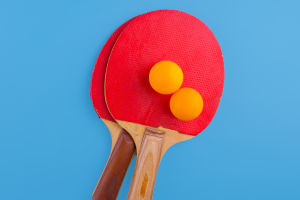Hello, Lykkers! Ready to dive into the exciting world of tennis?
From its unique scoring system to thrilling rallies, tennis combines strategy and skill in a way that keeps us coming back for more. Let's explore what makes this sport such a dynamic and engaging experience!
The Basics of Tennis
At its core, tennis is a sport played between two players (singles) or four players (doubles) on a rectangular court divided by a net. Players use rackets to hit a small ball over the net into the opponent's side. The objective is simple: score points by hitting the ball in a way that the opponent cannot return it within the boundaries of the court.
The unique scoring system sets tennis apart. Points progress from 0 (known as “love”) to 15, 30, 40, and finally, game point. Winning six games with at least a two-game lead constitutes winning a set, and matches are typically played as a best of three or five sets. This progression keeps the tension alive, with every point holding significance.
Key Skills in Tennis
To excel in tennis, players need a blend of power, accuracy, and agility. Key techniques include:
Serve: The game begins with a serve, a powerful shot aimed at starting each rally. A well-placed serve can give the server a significant advantage, especially if it's fast or hits a corner of the service box.
Forehand and Backhand: These are the primary strokes used during rallies. The forehand is usually stronger, while the backhand can add diversity to play. A balanced player learns to excel with both strokes, increasing their control over the ball's direction and speed.
Volley: Used when near the net, the volley allows players to hit the ball before it bounces, often leading to quicker points. Mastering the volley can help a player maintain offensive control.
Each of these strokes is essential for building a player's skills, and effective training focuses on improving control, speed, and endurance.
Strategies on the Court
Tennis is as much a mental game as it is physical. Strategic thinking is essential for victory, and each player brings their own unique style. For example, baseline players rely on consistent shots from the back of the court, while serve-and-volley players are aggressive at the net. Anticipating an opponent's next move and being prepared to adapt is a core part of competitive play.
Choosing between offensive and defensive tactics depends on factors like court surface, opponent's skill, and personal strengths. Players must be able to switch their strategies mid-game, ensuring they keep their opponent on their toes.
The Thrill of Tennis Competitions
Watching a live tennis match can be an exhilarating experience. Whether it's a Grand Slam like Wimbledon or a local tournament, each competition has its own charm. The speed, precision, and endurance displayed by players make each match thrilling. The energy of the crowd, the tension between players, and the stakes of each point create an atmosphere that keeps fans engaged.
The Global Appeal of Tennis
Though it has origins in France and England, tennis is now a global phenomenon. It's played and celebrated worldwide, with international tournaments drawing fans from every corner of the globe. From hard courts to clay to grass, each surface type adds unique challenges and showcases players' adaptability.
Whether you're a player or a fan, tennis offers endless excitement. The skills, strategy, and spirit of the game make it a sport loved across generations and continents. So next time you pick up a racket or watch a match, remember, you're part of a global tennis community.


